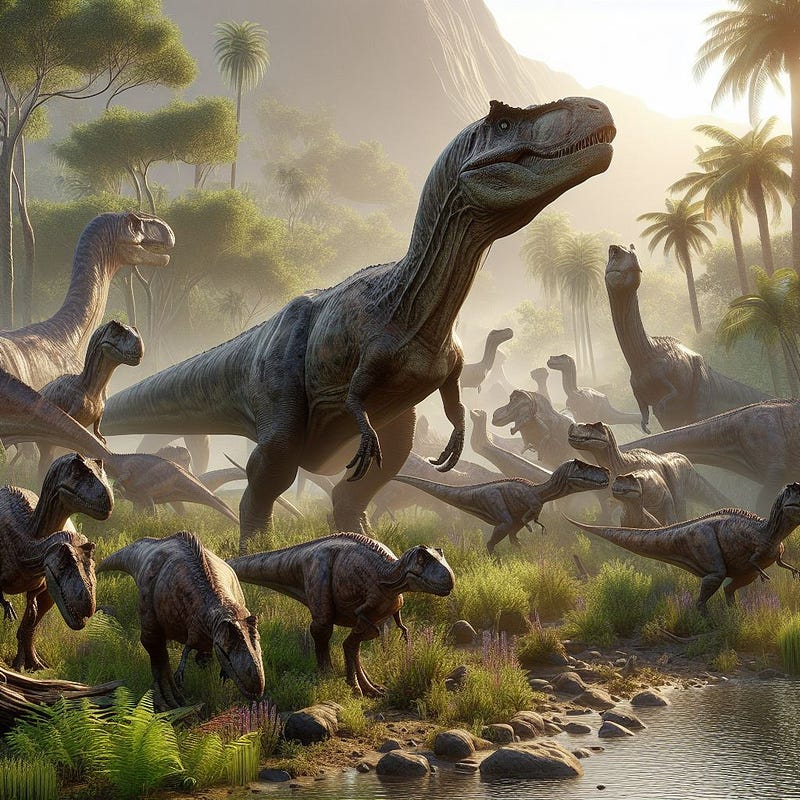Exploring Symbiotic Relationships: Nature's Complex Interactions
Written on
Chapter 1: Introduction to Symbiotic Organization
The previous introductory material suggested that life is fundamentally organized into intricate systems composed of various organisms or groups that interact with one another. These interactions can be deeply connected to the elements of organization, whether at the level of a symbiotic component or in terms of its self-organization.
These interactions can yield mutual benefits for both organisms, advantages for one, or detrimental effects for one or both components of the symbiosis. The distinction between beneficial and harmful interactions often arises from competition for resources or the advantageous reciprocal use of those resources.
A prime example of beneficial symbiotic organization is the relationship between the bacteria in our intestines and ourselves. These bacteria assist in food digestion and vitamin production, while we provide them with a warm, moist environment rich in nourishing resources.
Another example involves the symbiosis between algae and corals. Algae produce oxygen and nutrients for corals, while corals offer algae protection from sunlight and predators. Notably, corals can survive without algae, but their presence significantly enhances the coral habitat.
Conversely, harmful symbiotic arrangements exist, such as the relationship between parasites and animals. Parasites feed on the blood of their hosts, which can lead to diseases and even death. Additionally, parasitic worms can cause severe illnesses like malaria and schistosomiasis.
It becomes clear that these interactions can be understood as a struggle or cooperation for resources, rather than any inherent intent to harm. For instance, worms seek their resources without the aim to destroy their host; similarly, parasites feed without being parasitized themselves.

Chapter 2: Types of Symbiotic Interactions
Every complex biological system represents a form of symbiotic organization. For instance, an ecosystem consists of plants, animals, fungi, and bacteria that interact with one another. These interactions are crucial for the ecosystem's functionality.
Three primary types of symbiotic organization exist: mutualism, commensalism, and parasitism. Mutualism describes a symbiotic relationship in which both organisms benefit. Commensalism occurs when one organism benefits while the other remains unaffected, such as the relationship between algae and corals. In contrast, parasitism entails a situation where one organism (the parasite) benefits at the expense of the other (the host).
Symbiotic interactions often form incidentally when two organisms meet and find compatibility. For example, bacteria in our intestines arrived through ingestion. Once there, they discovered a favorable environment to thrive and began aiding in food digestion.
In some instances, these interactions may arise from convergent evolution. Algae and corals, for example, evolved independently to establish symbiotic relationships that benefit both parties.
The video titled "Magic People: Simona Herb. Despre cum să treci peste certuri, în cuplu." discusses strategies for overcoming conflicts in relationships, providing insights into mutual benefits in interpersonal connections.
Chapter 3: Symbiosis in Biological Systems
Every biological system can be viewed as a kind of symbiotic organization. For example, the relationship between the liver and the intestines is crucial for digestion. The liver produces bile to aid in food breakdown, which is then transported to the intestines for fat digestion.
Similarly, the lungs and blood share a symbiotic relationship; the lungs oxygenate the blood, while the blood transports oxygen throughout the body. Numerous symbiotic relationships also exist among various organs, such as the small and large intestines working together to digest food and absorb nutrients.
These symbiotic interactions are essential for the proper functioning of living organisms.
Chapter 4: Symbiosis Among Organism Colonies
The symbiotic approach can also be applied to colonies of living organisms. In plankton, for instance, various types of organisms, such as algae and bacteria, collaborate to form phytoplankton, which produces oxygen and nutrients for other organisms like zooplankton and fish.
In herds of herbivores, there are numerous symbiotic relationships. Herbivores and their gut bacteria work together to digest food. The herbivores provide a habitat for the bacteria, while the bacteria assist in nutrient absorption.
Even in carnivore families (predators), symbiotic relationships exist. Predators and their prey work together to maintain ecosystem balance. Predators manage prey populations, while prey offers sustenance to predators.
To summarize, the symbiotic approach can help us better understand how colonies of living organisms function and interact with each other.

Chapter 5: The Role of Family in Symbiotic Relationships
Examining the concept of symbiosis further leads us to understand how family dynamics influence these relationships. The number of family members can impact the effectiveness of finding food and evading predators. For example, a larger herd of antelopes may be less vulnerable to attacks compared to a smaller group.
Additionally, the age and experience of family members play a role. Older, more experienced members may guide and protect younger ones. For instance, a mother zebra teaches her young how to avoid predators.
Furthermore, the relationships among family members can also affect their symbiotic interactions. Members who work well together can be more effective in collaborating.
Specific examples of how herbivore family members can influence their symbiosis include:
- Elephant families have complex communication systems that allow them to collaborate in finding food and protecting each other from threats.
- Antelope families often have social hierarchies that facilitate cooperation in evading predators.
In some cases, herbivore families may even form symbiotic relationships with other species, such as birds that help protect them from pests.

Chapter 6: Behavioral Mimicry in Symbiotic Interactions
Behavioral mimicry also influences symbiotic relationships. For instance, if one organism observes another engaging in a beneficial symbiotic relationship, it may be more inclined to seek a similar connection.
Mimicry can help maintain existing symbiotic relationships as well. An organism may imitate the behavior of another that provides benefits to the symbiotic relationship.
However, behavioral mimicry can also distort symbiotic interactions if an organism mimics a non-symbiotic partner, leading to conflict or dysfunction.
In conclusion, behavioral mimicry significantly impacts symbiotic relationships. This type of social learning allows individuals to adopt efficient behaviors by observing others, which can be advantageous in various contexts.
Chapter 7: Evolutionary Development and Social Relationships
From the discussions thus far, it is evident that the evolutionary development of the brain may act as a catalyst for a specific type of symbiotic relationship. The brain's complexity enables individuals to adapt to their environments.
In social organisms, brain development has facilitated communication and cooperation, leading to intricate social relationships that provide numerous advantages.
For example, social relationships can grant access to resources like food and protection, as well as emotional and social support, regardless of the level of consciousness involved.
In summary, the evolutionary development of the brain has allowed individuals to form complex social relationships that confer significant benefits. These social bonds can be seen as a form of symbiotic relationship, as they offer individuals evolutionary advantages.

Chapter 8: Evidence of Social Symbiotic Structures in History
Historical evidence suggests that life has always been organized into social, symbiotic groups. Some supporting findings include:
- Fossils of animals that lived together, such as crocodiles and turtles found in the same habitat.
- Fossils exhibiting healing wounds or diseases that indicate a continuity of existence within a group.
- Fossils of animals displaying signs of cooperative hunting or reproduction, like dinosaurs believed to have hunted in groups.
While these findings are not definitive, as many animals are solitary, they suggest that social groups were a common characteristic among many life forms.
Examples of animals believed to form symbiotic social groups include:
- Crocodiles, which live in groups of up to 100 individuals, cooperating in hunting and protection.
- Turtles, which also form social groups.
- Certain dinosaurs, such as ceratopsians, thought to have lived in social groups.
These social, symbiotic groups provided significant benefits, including access to resources, protection from predators, and improved survival and reproductive chances.
The repetition of these behaviors likely led not only to permanent physiological changes but also to the development of organs that participate in symbiosis.
Through my efforts to present the most significant details of the journey toward humanity, I hope you have enough arguments to appreciate the materials that will follow.
Merticaru Dorin Nicolae
Peace, love, understanding, and gratitude!
This material is part of a forthcoming book that I have chosen to develop here on Medium: "Beginnings." If you appreciate the results of my work, you can support future efforts by subscribing to my email notifications via Medium. Thank you!
From my work here, you can also access "The New (Old) Paradigm of New Medicine" and "The Mortgage of Someone's Soul." Thank you!